How do i scale an axis with ggplot2 beginning at a certain point. Let's say we have a range from 0 to 100 and most values are within the range 1 to 10 and one value is at 100.
require('data.table')
require('ggplot2')
test <- data.table(x=1:10,y=c(seq(1,9),100))
ggplot(test, aes(x=x,y=y)) + geom_point(size=5)
I would like to create a graph with an y-scale from 1 to 10 by 1 and afterwards by 10 so the space between the value 9 and 100 gets "smaller" in the graph.
Update:
The way of eipi10 works perfect for what i want to achieve. Just one more detail i am struggling with. How do i get rid of the 2nd legend and keep the right ratio in the final plot?
and the code for the plot:
test <- data.table(x=1:10,y=c(seq(1,9),100))
p1 = ggplot(test, aes(x=x,y=y,color=x)) +
geom_point(size=5) +
scale_x_continuous(limits=c(0,10)) +
coord_cartesian(ylim=c(-0.1,10)) +
scale_y_continuous(breaks=0:10) +
theme(plot.margin=unit(c(0,0.5,0,0),"lines"))
p2 = ggplot(test, aes(x=x,y=y,color=x)) +
geom_point(size=5) + #geom_point(size=5,show.legend=FALSE) +
scale_x_continuous(limits=c(0,10)) +
coord_cartesian(ylim=c(40,110)) +
scale_y_continuous(breaks=c(50,100)) +
theme(plot.margin=unit(c(0,0.5,-0.5,0), "lines"),
axis.title.x=element_blank(),
axis.ticks.x=element_blank(),
axis.text.x=element_blank(),
legend.position="none") +
labs(y="")
gA <- ggplotGrob(p1)
gB <- ggplotGrob(p2)
maxWidth = grid::unit.pmax(gA$widths[2:5], gB$widths[2:5])
gA$widths[2:5] <- as.list(maxWidth)
gB$widths[2:5] <- as.list(maxWidth)
grid.arrange(gB, gA, ncol=1, heights=c(0.15,0.85))
Update 2:
An example of the final result. Thanks again to eipi10 and his great support!





